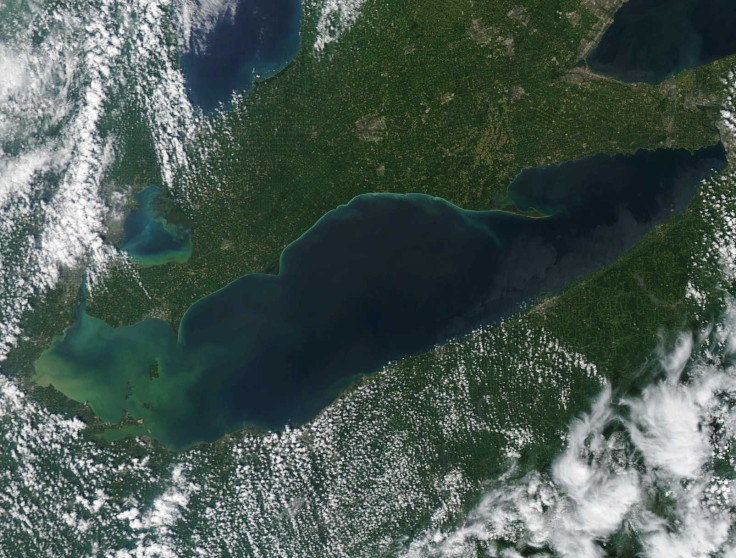Lake Erie Toxic Algae: Pelee Island Closes Beaches, Warns Against Tap Water Amid Blue-Green Algae Flare-Up
Lake Erie Island Warns Of Toxic Algae Flare-Up

Toxic algae is rearing its head again in Lake Erie, just weeks after blue-green blooms near Toledo, Ohio caused a tap water crisis for 500,000 residents. Local Canadian authorities this week closed the beaches of Pelee Island and warned residents not to turn on their faucets, the Windsor Star newspaper reported.
The 16-square-mile island sits near the border of Canada and the United States and is a popular tourist spot in the Great Lakes region. The Windsor-Essex County Health Unit issued an algae advisory Tuesday and has not yet rescinded the alert.
Toxic algal blooms are on the rise across the country as states struggle to clamp down on agricultural runoff -- the phosphorous-laden fertilizer and manure that washes off farms and feedlots and into ponds, rivers and lakes. Industrial waste, sewage from septic tanks and treatment plants and lawn fertilizer also contribute to algae pollution.
While most algae are typically harmless, they sometimes produce harmful toxins like microcystin that, if ingested, cause fevers, vomiting and diarrhea. Direct skin contact can cause hives, blisters and rashes, while long-term exposure can damage the liver and kidneys. The microcystin toxin, a product of cyanobacteria, was found in Toledo’s Collins Water Treatment Plant earlier this month, leading Ohio Gov. John Kasich to declare a state of emergency.
Rick Masse, mayor of Pelee Island, said that that the algal bloom near its shorelines should subside in about a week if lake temperatures cool and winds and currents whisk it away, the Windsor Star noted.
© Copyright IBTimes 2024. All rights reserved.





















